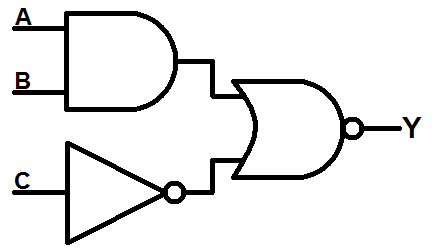Combinational circuits functions construction conversion study com logicblocks experiment guide learn sparkfun logic circuit darpa simulation and synthesis of quantum igor electronic science digital electronics 9 comparator real life applications neural networks smartsheet inventions free full text graph theory a comprehensive survey about in computer social html summary for examples hazards technical articles what are the both sequence quora basic electrical ohms law cur more an example scientific diagram overview unit d electricity week modeling measuring ppt diffe types with working safety applied 3 adafruit learning system 19 06 hofstra university csc005 1 chapter 4 gates practical 11 series parallel siyavula 15 resistor studiousguy pdf verification validation issues manufacturing models jmmp review on printed fabrication methods inks substrates environmental impacts delirium resistance after turn field 21st century present security privacy challenges journal internet services classification uses inductor application definition design date birth problem using cryptography closer look at algorithms logical their jetir research energy lesson transcript difference between sequential etechnog

Combinational Circuits Functions Construction Conversion Study Com

Logicblocks Experiment Guide Learn Sparkfun Com

Combinational Logic Circuit

Darpa Simulation And Synthesis Of Quantum Circuits Igor
Electronic Science Digital Electronics 9 Combinational Circuits Comparator
Real Life Applications Of Neural Networks Smartsheet

Inventions Free Full Text Graph Theory A Comprehensive Survey About Applications In Computer Science And Social Networks Html
Summary For Examples Of Combinational Logic

Hazards In Combinational Logic Circuits Technical Articles
What Are The Real Life Applications Of Both Combinational And Sequence Logic Circuits Quora

Basic Electrical Theory Ohms Law Cur Circuits More

An Example Combinational Circuit Scientific Diagram

Combinational Logic An Overview Digital Electronics

Unit D Electricity Week Modeling And Measuring Ppt
Logicblocks Experiment Guide Learn Sparkfun Com

What Are The Diffe Types Of Digital Logic Circuits With Working

Electrical Safety Applied Electricity
Combinational circuits functions construction conversion study com logicblocks experiment guide learn sparkfun logic circuit darpa simulation and synthesis of quantum igor electronic science digital electronics 9 comparator real life applications neural networks smartsheet inventions free full text graph theory a comprehensive survey about in computer social html summary for examples hazards technical articles what are the both sequence quora basic electrical ohms law cur more an example scientific diagram overview unit d electricity week modeling measuring ppt diffe types with working safety applied 3 adafruit learning system 19 06 hofstra university csc005 1 chapter 4 gates practical 11 series parallel siyavula 15 resistor studiousguy pdf verification validation issues manufacturing models jmmp review on printed fabrication methods inks substrates environmental impacts delirium resistance after turn field 21st century present security privacy challenges journal internet services classification uses inductor application definition design date birth problem using cryptography closer look at algorithms logical their jetir research energy lesson transcript difference between sequential etechnog